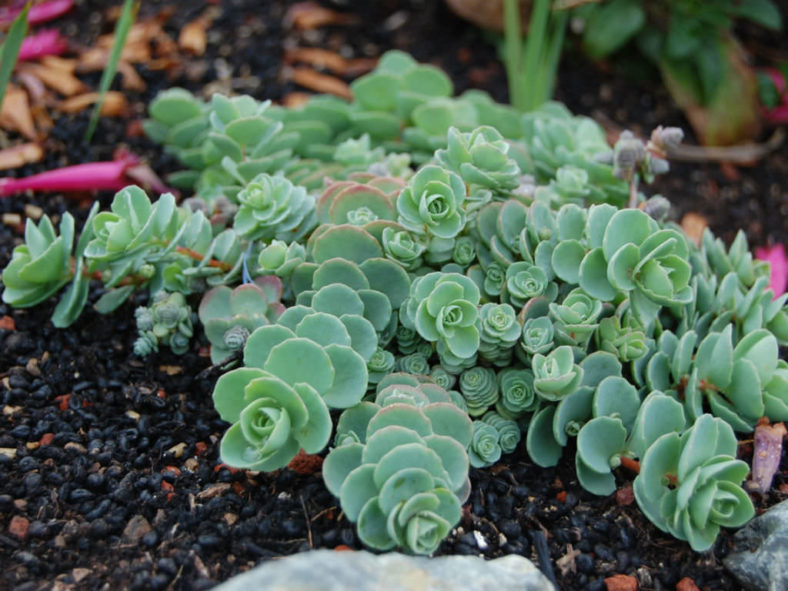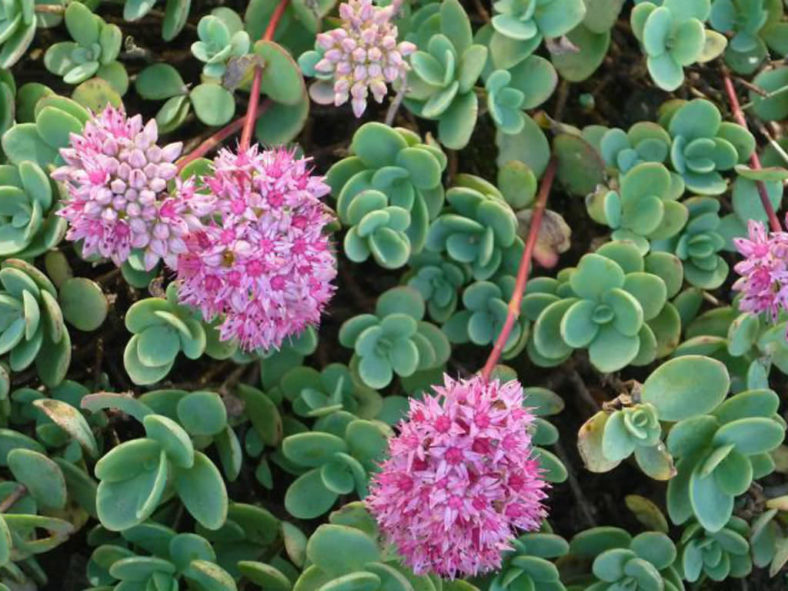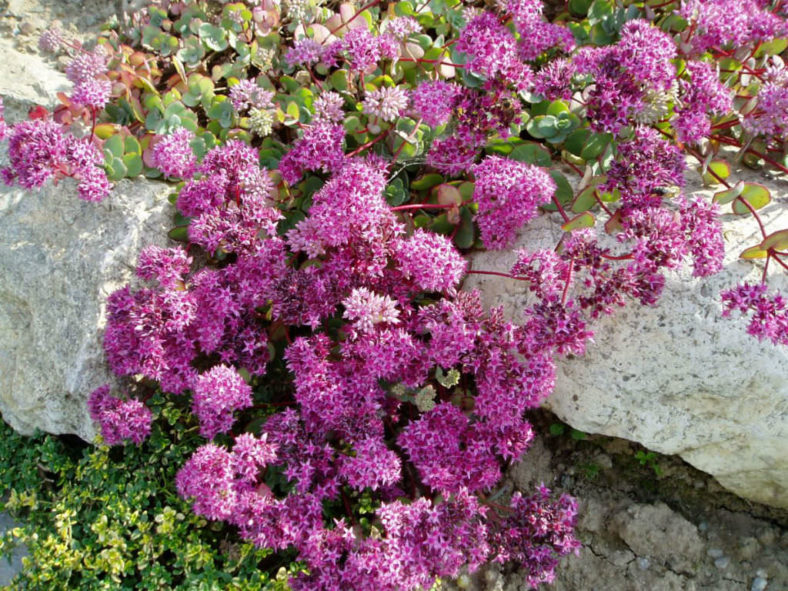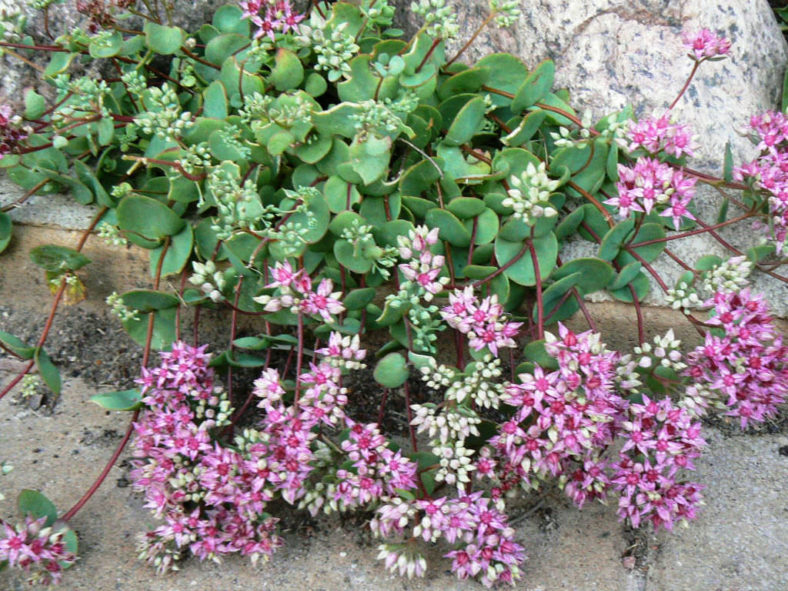Scientific Name
Hylotelephium ewersii (Ledeb.) H. Ohba
Common Name(s)
Pink Mongolian Stonecrop
Synonym(s)
Sedum ewersii
Scientific Classification
Family: Crassulaceae
Subfamily: Sempervivoideae
Tribe: Telephieae
Genus: Hylotelephium
Etymology
The specific epithet "ewersii (ev-ERZ-ee-eye)" honors Johann Philipp Gustav von Ewers (1779-1830), a German legal historian, a friend of Carl Friedrich von Ledebour (1786-1851) and a promotor of his botanical exploration in Siberia.
Origin
This succulent is native to the Himalayas and the mountains of Central Asia at elevations of up to 14,000 feet (4,300 m).
Description
Hylotelephium ewersii, formerly known as Sedum ewersii, is a deciduous succulent that forms a low mound of many decumbent stems that bear thick, fleshy, pale green to gray-green leaves. It can grow up to 4 inches (10 cm) tall. The stems are thin but wiry, woody, branched near the base, and can reach up to 10 inches (25 cm) in length. The leaves are rounded with entire or finely-toothed margins, measuring up to 0.8 inches (2 cm) in diameter.
The flowers are pink or pale purple to purplish-red, star-shaped, and can reach about 0.4 inches (1 cm) in diameter. They appear in clusters on short stems above the foliage in late summer.

How to Grow and Care for Hylotelephium ewersii
Light: This succulent prefers full sun. It tolerates light to partial shade in hot summer climates but will produce weak, floppy growth when grown in too much shade. Plant your H. ewersii in an area of your garden with 6 hours of sunlight daily.
Soil: H. ewersii does not need rich soil, but it does need excellent drainage. Choose a commercial potting mix for succulents, or make one yourself.
Hardiness: This plant has a tolerance to heat and drought and is cold-hardy, making it a popular outdoor succulent. H. ewersii can withstand temperatures as low as -30 to 30 °F (-34.4 to -1.1 °C), USDA hardiness zones 4a to 9b.
Watering: The best way to water H. ewersii is to use the "soak and dry" method. Get the soil completely wet, and then wait until it is dry before watering again.
Fertilizing: Feed annually with a balanced fertilizer. Apply the fertilizer to the soil according to the package directions in spring as new growth appears.
Repotting: Plants in containers require little more care than gardens. Repot your H. ewersii when it outgrows its current pot by moving it to a larger pot to hold the plant better. Spring is the best time to repot this plant. Make sure the soil is dry before you begin the repotting process.
Propagation: This succulent can be grown from seeds, division, or stem cuttings. Sow seeds in spring. Dividing your H. ewersii is easy and can be carried out at almost any time in the growing season, though it is probably best done in spring or early summer. Propagate by stem cuttings in summer.
Learn more at How to Grow and Care for Hylotelephium.
Toxicity of Hylotelephium ewersii
H. ewersii can be mildly toxic to humans and animals.
Links
- Back to genus Hylotelephium
- Succupedia: Browse succulents by Scientific Name, Common Name, Genus, Family, USDA Hardiness Zone, Origin, or cacti by Genus
Photo Gallery
Click on a photo to see a larger version.


